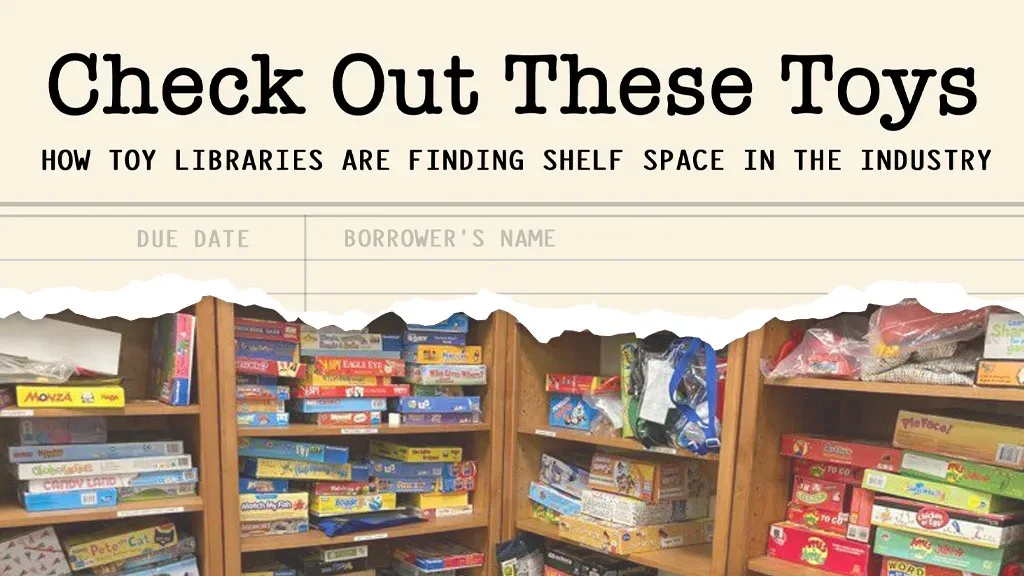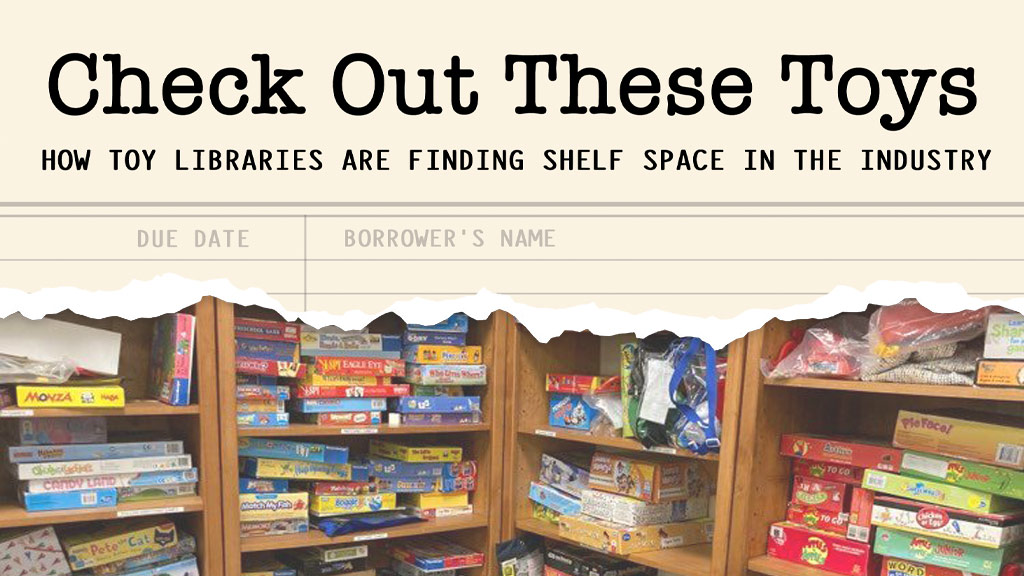
Recently, Matt Seidel was enjoying a make-belive dinner party with two toddlers, Elsa, and Baby Yoda. While this sounds unusual, this was a fairly typical day at work for Seidel, who had been invited to play pretend in a room filled with overflowing dress-up bins and wooden shelves stuffed with dozens of board games — all of which the young patrons at his table could choose to take home, free of charge. You see, Seidel runs the Toy Library at the Lincoln Branch Public Library in Rochester, New York.
Toy libraries are, for the most part, exactly what they sound like. Instead of books, their shelves are stacked with toys that patrons can borrow and play with, then bring back. But, the concept isn’t entirely new. The USA Toy Library Association (USATLA) was founded back in 1984 when 15 toy library locations came together to share ideas. At launch, the USATLA got financial support from Fisher-Price and its parent company at the time, Quaker Oats.
Now, almost 40 years later, USATLA Executive Director Judith Iacuzzi says there are about 500 toy libraries in the U.S. Many are affiliated with a church or a public library and most — though not all — are nonprofit organizations.
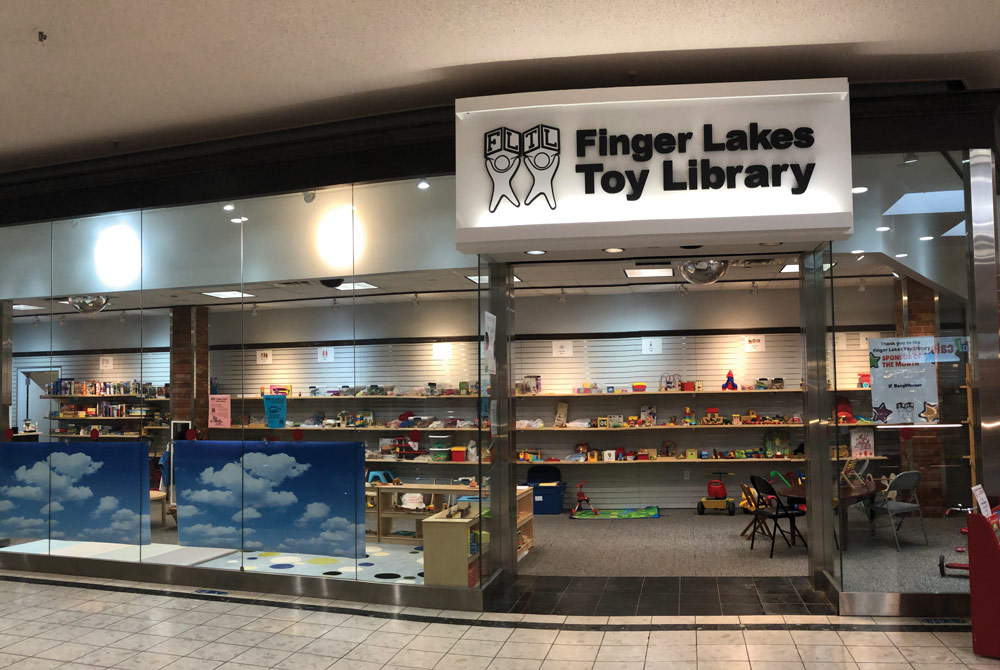
THE BENEFITS OF SHARED PLAY
Exactly what inventory these toy libraries offer varies. For example, the Finger Lakes Toy Library in Ithaca, New York, offers 14 toy categories — such as construction, games, infant, outdoor, dress-up, puzzles, and vehicles — and primarily caters to kids under age 10. The location doesn’t lend out toys based on TV or movie characters, battery-operated toys, stuffed animals, or books.
The Minneapolis Toy Library, however, specifically offers toys for kids ages 0-5. At this location, some of the most popular options are trip kits (a selection of toys for travel) and cars from a collection of more than 500 vehicles.
Many toy libraries also offer some sort of play space or event area for kids in the community. This is the case at the Rochester Toy Library, which offers professional training for parents, teachers, and childcare providers; summer programming; and a 2,500-square-foot public play space, complete with a puppet theater.
According to Seidel, these supplemental offerings all center around the ethos that play is a critical component in development. “It’s just as important to us that we offer a stimulating environment for childcare workers, schools, and other organizations to meet and work with kids,” he says. “We see this both as a way of providing a service to our patrons and connecting us more with Rochester as a whole.”
This sentiment also speaks to one of the most central toy library tenants, which is a sense of community. As Iacuzzi explains, “Toy libraries typically are located in neighborhoods so that families can network, congregate, and strengthen ties.” However, this is just one of the benefits of these lending libraries.
Another is the cost-saving opportunity for families of any socioeconomic status. Members often pay nothing (or very little) to access these services, which Rebecca Nutter of the Minneapolis Toy Library says can save families both money and space. “It’s alarming how much families spend on toys for their kids,” she says. “Then, talking about how many toys families have in their home, that can be overwhelming, too. The toy library fits all home sizes because you can bring back that large train set or bounce house after a couple of weeks.”
Additional perks include the opportunity for kids to learn how to choose their own toys as intelligent consumers and a decreased environmental impact, as multiple families sharing the same products results in less packaging waste and fewer toys in landfills.
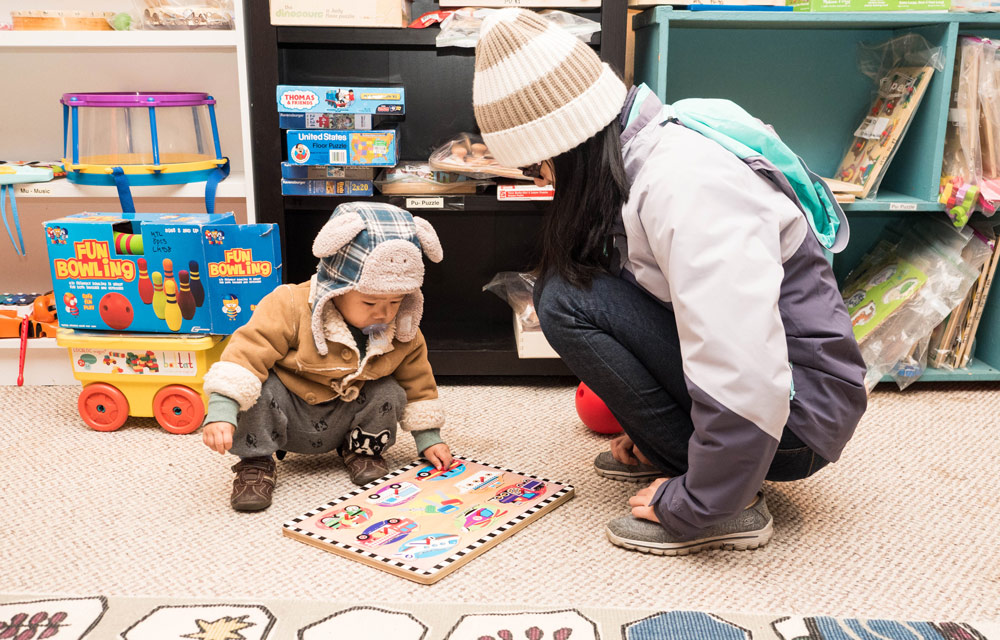
NOT ALL FUN AND GAMES
While the premise of lending toys is fairly straightforward, these organizations can face plenty of challenges — most notably finding a location and keeping the library both staffed and funded.
“The idea is not simple, even though it may sound simple,” Iacuzzi says. “Toy libraries are nonprofit operations and require planning and people with various talents. We advise those interested in developing a toy library to begin with a core group of individuals who embrace the idea, are willing to help it take shape, and will volunteer to make a go of it.”
Nutter experienced all of these hurdles while starting the Minneapolis Toy Library, going so far as to host the library in her garage for one summer after the inventory outgrew what the team could bring to and from local public library meeting rooms. “Kids would browse the toy selection [in my garage] while some parents questioned, ‘Is the motorcycle available to borrow?’” she fondly recalls. Now, this toy library is housed in a more permanent home at the Richfield Lutheran Church, where it has rented space for five years.
As it did with most industries, the COVID-19 pandemic also added new challenges for toy libraries, as most had to close their doors for at least a few months. Some locations, including the Rochester Toy Library, offered virtual programming, while all toy libraries had to ensure their cleaning procedures were top-notch upon reopening. These procedures vary by location, with some offering detailed cleaning instructions for families to follow at home and others fully disinfecting toys upon their return.
Another more basic challenge that Seidel notes is the public’s unfamiliarity with the concept of a toy library. “Every day, I meet patrons who had never heard of our Toy Library before and this one has been here since 2000,” he says. “Fortunately, as difficult as getting funding to start one might be, the concept seems to be becoming more popular. My dream is that every library eventually has a toy library because it’s a perfect example of what libraries can offer communities across the country.”
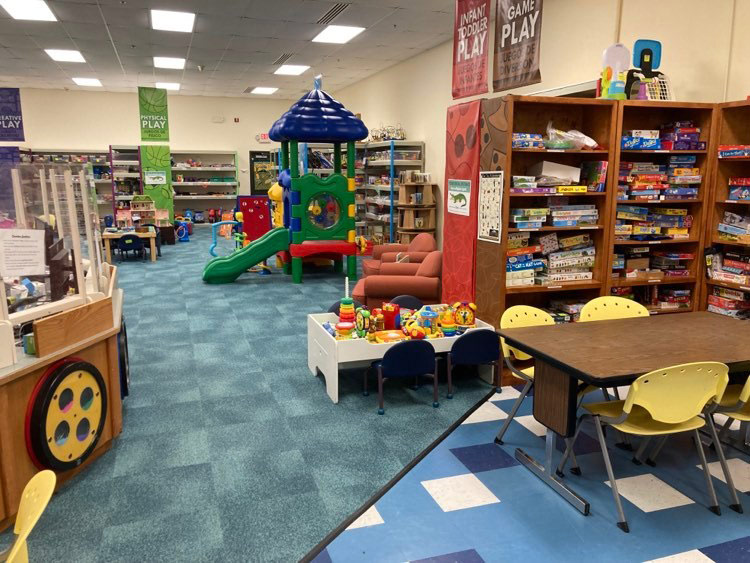
THE BIGGER PICTURE
One question remains in the toy library conversation: Where does the toy industry fit in? The very concept may seem antithetical to anyone who uses toy sales as an absolute metric of success. Yet, both the USATLA and many toy library managers agree that toy manufacturers and toy libraries can not only coexist, but also help each other.
In fact, toy companies including Kaplan Learning, Hasbro, Lakeshore Learning, and Mattel have worked with the USATLA, supporting the association’s national conferences with tabletop displays, advertising in the USATLA newsletter, and sometimes offering discounted products to toy libraries.
Other toy companies have donated products directly to toy libraries around the country. Debra Eileen Lewis, the founding board president of the Finger Lakes Toy Library, says her location has received toy donations from companies including HABA USA and Peaceable Kingdom. The library team also affixes labels to these donated toys, thanking the manufacturers for their contribution.
Lewis also mentions that toy companies can make great financial sponsors of toy libraries, which often have strong community ties and visibility.
“It’s also a way for toy companies to share joy with kidswhose families can’t afford to purchase toys.”
Debra Eileen Lewis, The Finger lakes toy library
“It’s also a way for toy companies to share joy with kids whose families can’t afford to purchase toys … to show that they support kids of all backgrounds whether their families are customers or not,” Lewis says.
Additionally, she says many of the Finger Lakes Toy Library members — her own family included — have purchased toys after trying them out at the toy library. This is something Iacuzzi also highlights as a reason why the toy industry can (and should) embrace toy libraries.
“Both entities — toy companies and toy libraries — value and disperse quality products. … Toy libraries offer hands-on advertising support of quality toys from many manufacturing and retail sources! In a way, they are advertising hubs,” Iacuzzi says. “I believe there is much common ground to be walked between toy manufacturers, retailers, and toy libraries, now and in the future.”
This article was originally published in the June 2022 edition of the Toy Book. Click here to read the full issue!

